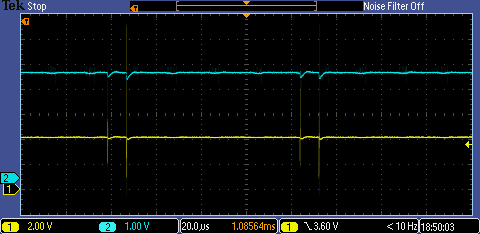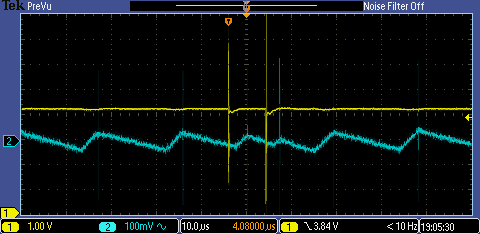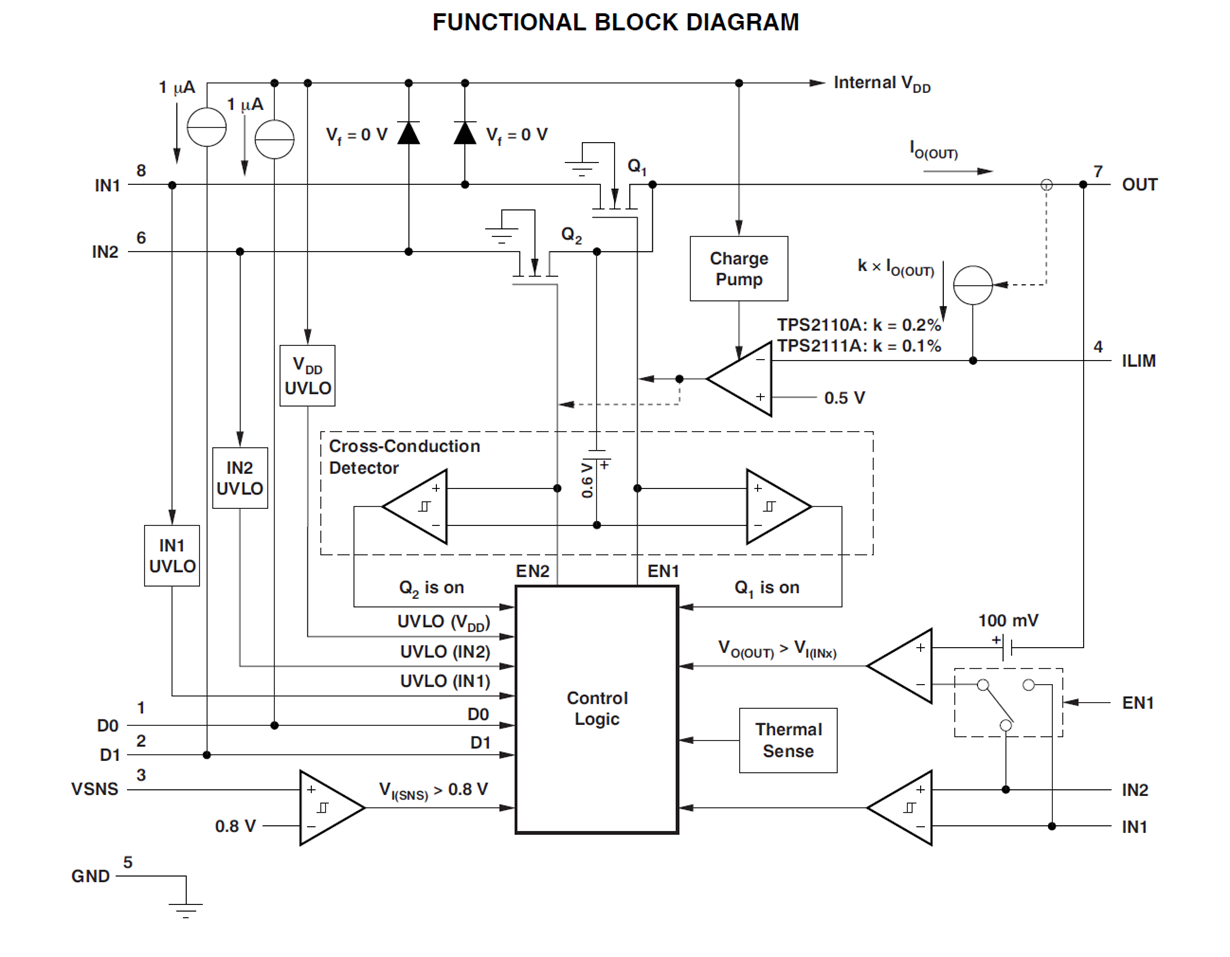I'm having a hard time figuring out what is wrong with my power circuit. The desired behavior is to switch between a LiPo battery and USB power automatically, always favoring USB when it is available. Here is the schematic:
There are two mysteries at the moment - the first is that my output voltage is closer to 3.7V instead of 3.6V, and the feedback voltage is correspondingly higher than 500mV... so I haven't completely ruled out problems with the DC/DC converter design. However, this part of the circuit has worked fine for me on boards in the past and I don't see my dropout problem when I work on USB power alone.
The second mystery is that the circuit fails for about 4 ms when the load is increased suddenly by driving a digital out on a downstream MCU. I'm probably asking the DC/DC converter for another ~3mA max and there are 22uF capacitors all over the place, but I do see a small drop on the input side of the DC/DC converter that suggests that for a very brief time period I am asking for a lot of current.
Some of the ideas I've thought of that don't seem to help yet:
1. Do I need a pulldown on D1 in case the dropout is caused by the TPS2111A seeing a momentary logic high and trying to switch back to USB power (which is disconnected...)
-- I've tried adding this with some rework to no effect.
2. Is this a noise issue on one or more of the pins?
-- Hard to rule out, but the threshold voltages are all pretty high and I didn't think chip would be so finicky... no rework efforts in this direction have helped yet. Next step might be to litter the region with ferrite beads.
3. Is this an ILIM issue whereby the switch is being asked for a huge current by the DC/DC converter?
-- The datasheet isn't clear to me on what happens when the max current is exceeded. I have tried shorting Rilim to no effect -- the datasheet suggests this is "not recommended" but only mentions that the output current will not be limited.
I'm unsure what to test next. I might try soldering the pins (1,2,3, and 5) together at the package to rule out noise on the logic side.
I have verified that everything works fine off the battery if I remove the chip entirely and tie the pads 6 and 7 together to connect the battery directly to the DCDC supply...
Any help would be greatly appreciated!







